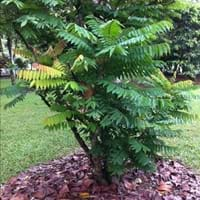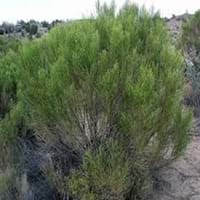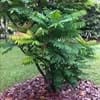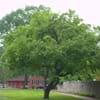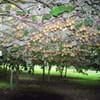Life Span
Perennial
Perennial
Type
Flowering Plants, Herbs
Shrub
Origin
Hybrid origin
Hybrid origin, Southwestern United States
Types
Not Available
Not Available
Number of Varieties
Not Available
Habitat
moist forests, Mountains
riparian zones, Semi desert, Upland
USDA Hardiness Zone
4-9
8-10
Sunset Zone
1a, 1b, 2a, 2b, 3a, 3b, 4, 5, 6, 7, 8, 9, 10, 11, 12, 13, 14, 15, 16, 17, 18, 19, 20
7, 8, 9, 10, 11, 12, 13, 14
Habit
Clump-Forming
Spreading
Flower Color
Purple, Pink, Lavender
White
Flower Color Modifier
Bicolor
Not Available
Fruit Color
Brown
creamy white
Leaf Color in Spring
Green
Green
Leaf Color in Summer
Green
Green
Leaf Color in Fall
Green
Green
Leaf Color in Winter
Green
Green
Leaf Shape
Pinnate
Oblanceolate , Ovate
Plant Season
Spring, Summer
Spring, Summer, Fall, Winter
Sunlight
Full Sun
Full Sun
Type of Soil
Clay, Loam, Sand
Clay, Loam, Sand
The pH of Soil
Acidic, Neutral, Alkaline
Acidic, Neutral, Alkaline
Soil Drainage
Well drained
Well drained
Bloom Time
Late Spring, Summer
Spring
Tolerances
Drought, Salt
Drought, Dry soil, Heat Tolerance
Where to Plant?
Ground
Ground, Pot
How to Plant?
Cuttings, Seedlings
Seedlings
Plant Maintenance
Medium
Medium
Watering Requirements
Needs very little water
Needs very little water
In Summer
Lots of watering
Lots of watering
In Spring
Moderate
Moderate
In Winter
Average Water
Average Water
Soil pH
Acidic, Neutral, Alkaline
Acidic, Neutral, Alkaline
Soil Type
Clay, Loam, Sand
Clay, Loam, Sand
Soil Drainage Capacity
Well drained
Well drained
Sun Exposure
Full Sun
Full Sun
Pruning
cut main trunk every 5 years, Prune after flowering, Prune central stem, Remove damaged leaves, Remove dead branches, Remove dead leaves
Cut back old stems to the ground, Remove damaged leaves, Remove dead branches, Remove dead leaves
Fertilizers
All-Purpose Liquid Fertilizer, Apply 5-10-5 amounts, Compost
can go long without fertilizers
Pests and Diseases
Nematodes, Red blotch, Trunk Rot
Pests and diseases free
Plant Tolerance
Drought
Dry Conditions, Dry soil, Heat And Humidity
Flower Petal Number
Single
Single
Foliage Texture
Medium
Fine
Foliage Sheen
Glossy
Glossy
Attracts
Butterflies, Leaf Hoppers
Butterflies
Allergy
Itchiness, Not Available, Sore Throat
Unknown
Aesthetic Uses
Beautification
along a porch, deck or patio, Beautification, Ground Cover, Showy Purposes, Wild gardens
Beauty Benefits
Anti-ageing, Good Cleanser, Remove blemishes, Removes pimples
Not Available
Edible Uses
Yes
Sometimes
Environmental Uses
Air purification, Food for animals, Food for birds, soil stabilisation
Air purification
Medicinal Uses
Cough, Haemorrhages, Laxative, Obesity, Tonic
anti-inflammatory, Anti-oxidant, cholesterol-lowering
Part of Plant Used
Fruits, Leaves
Twigs
Other Uses
Added to salads, Can be boiled and seasoned, pickled, Culinary use
Can be made into a herbal tea
Used As Indoor Plant
No
No
Used As Outdoor Plant
Yes
Yes
Garden Design
Container, Cutflower, Mixed Border, Rock Garden / Wall, Wildflower
Groundcover
Botanical Name
Averrhoa bilimbi
BACCHARIS 'Centennial'
Common Name
Bilimbi, Mimbro
desert broom , broom baccharis , greasewood
In Hindi
Bilimbi
desert broom
In German
bilimbi
Wüste Besen
In French
bilimbi
desert broom
In Spanish
bilimbi
escoba del desierto
In Greek
bilimbi
desert broom
In Portuguese
bilimbi
vassoura do deserto
In Polish
bilimbi
desert broom
In Latin
Rondo Beardtongue
desert broom
Phylum
Magnoliophyta
Magnoliophyta
Class
Magnoliopsida
Magnoliopsida
Order
Oxalidales
Asterales
Family
Oxalidaceae
Asteraceae
Clade
Angiosperms, Eudicots, Rosids
Angiosperms, Asterids, Eudicots
Tribe
Not Available
Astereae
Subfamily
Not Available
Not Available
Number of Species
Not Available
Season and Care of Bilimbi and Desert Broom
Season and care of Bilimbi and Desert Broom is important to know. While considering everything about Bilimbi and Desert Broom Care, growing season is an essential factor. Bilimbi season is Spring and Summer and Desert Broom season is Spring and Summer. The type of soil for Bilimbi is Clay, Loam, Sand and for Desert Broom is Clay, Loam, Sand while the PH of soil for Bilimbi is Acidic, Neutral, Alkaline and for Desert Broom is Acidic, Neutral, Alkaline.
Bilimbi and Desert Broom Physical Information
Bilimbi and Desert Broom physical information is very important for comparison. Bilimbi height is 38.10 cm and width 25.40 cm whereas Desert Broom height is 60.00 cm and width 150.00 cm. The color specification of Bilimbi and Desert Broom are as follows:
Bilimbi flower color: Purple, Pink and Lavender
Bilimbi leaf color: Green
Desert Broom flower color: White
- Desert Broom leaf color: Green
Care of Bilimbi and Desert Broom
Care of Bilimbi and Desert Broom include pruning, fertilizers, watering etc. Bilimbi pruning is done cut main trunk every 5 years, Prune after flowering, Prune central stem, Remove damaged leaves, Remove dead branches and Remove dead leaves and Desert Broom pruning is done Cut back old stems to the ground, Remove damaged leaves, Remove dead branches and Remove dead leaves. In summer Bilimbi needs Lots of watering and in winter, it needs Average Water. Whereas, in summer Desert Broom needs Lots of watering and in winter, it needs Average Water.
